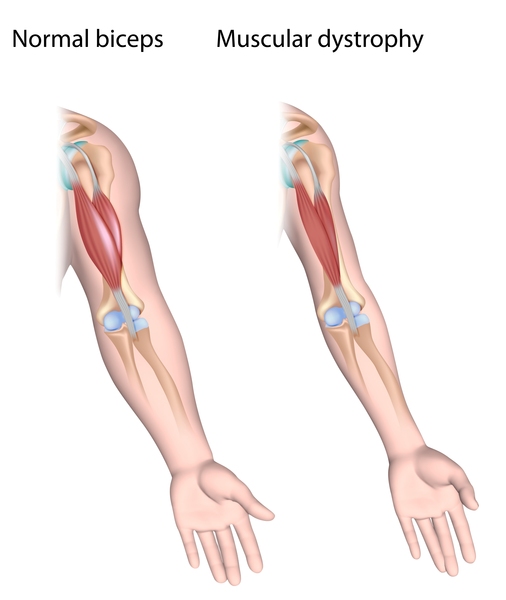Muscular dystrophy (MD) is a group of inherited conditions that cause a gradual weakening of the voluntary muscles, which control movement. In some cases, this condition also affects the heart and other vital organs. There are several major forms of muscular dystrophy, each with its unique characteristics, impacting individuals of all ages.
Exploring the Types of Muscular Dystrophy
Muscular dystrophy encompasses nine primary forms:
- Myotonic
- Duchenne
- Becker
- Limb-girdle
- Facioscapulohumeral
- Congenital
- Oculopharyngeal
- Distal
- Emery-Dreifuss
These diverse types of MD may manifest from infancy to middle age or even later in life, with their severity and characteristics influenced by the age of onset. Some forms primarily affect males, while others present mild symptoms that progress slowly, offering a longer life expectancy, whereas certain forms lead to rapid muscle deterioration and reduced lifespan, with individuals succumbing in their late teens or early twenties.
Symptoms and Progression
Each type of muscular dystrophy exhibits distinct symptoms:
- Myotonic MD: Common among adults, it causes prolonged muscle stiffness (myotonia), particularly in cold conditions, and affects various bodily systems.
- Duchenne MD: Most frequent in children, primarily males, it leads to muscle weakening, often necessitating a wheelchair by age 12, and can result in severe complications.
- Becker MD: Similar to Duchenne but milder, it appears later in life and progresses more slowly, allowing individuals to walk into their thirties or beyond.
- Limb-girdle MD: Affecting both genders in teens or early adulthood, it initiates muscle weakness in the hips and spreads, leading to mobility issues over time.
- Facioscapulohumeral MD: Occurring in teens or early adulthood, it progresses slowly with intermittent muscle deterioration and affects movements like walking, chewing, swallowing, and speaking.
- Congenital MD: Present from birth, it progresses slowly with early joint contractures and, in some forms, brain abnormalities leading to seizures.
- Oculopharyngeal MD: Developing in middle age, it causes muscle weakness in the eyes and throat, potentially leading to swallowing difficulties and muscle weakness in other areas.
- Distal MD: Affects adult men and women, causing muscle weakness and wasting in distant muscles of the forearms, hands, lower legs, and feet.
- Emery-Dreifuss MD: Rare, it impacts children and some females, causing muscle weakness in the shoulders, upper arms, and lower legs, along with heart problems.
Understanding the Genetic Basis
Muscular dystrophy results from genetic defects, with specific gene abnormalities linked to each type. Most forms are inherited through X-linked disorders, which mothers can pass to their sons. However, some cases arise from new gene mutations.
Diagnosis and Management
Diagnosing MD involves several tests, including muscle biopsy, genetic testing, neurological assessments, enzyme tests, heart monitoring, and imaging. While there’s no cure, treatments aim to manage symptoms and improve the quality of life.
Physiotherapy’s Vital Role
Physiotherapy plays a crucial role in managing MD by addressing symptoms like contractures, mobility limitations, and respiratory issues. It also provides essential support and guidance for parents and caregivers.
Muscular dystrophy presents significant challenges, but with a compassionate, multi-disciplinary approach, individuals affected by this condition can enhance their quality of life and find support in their journey.

